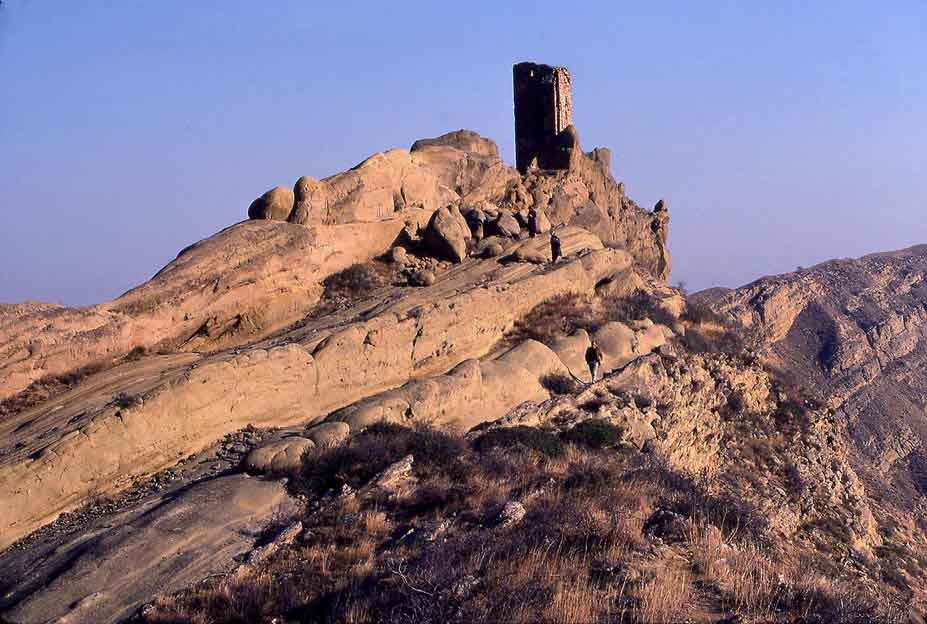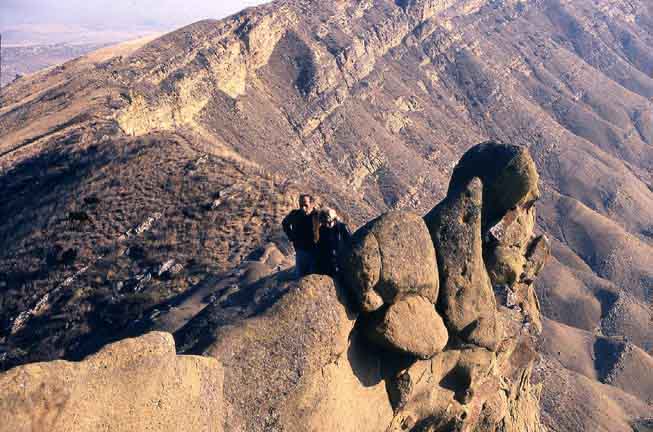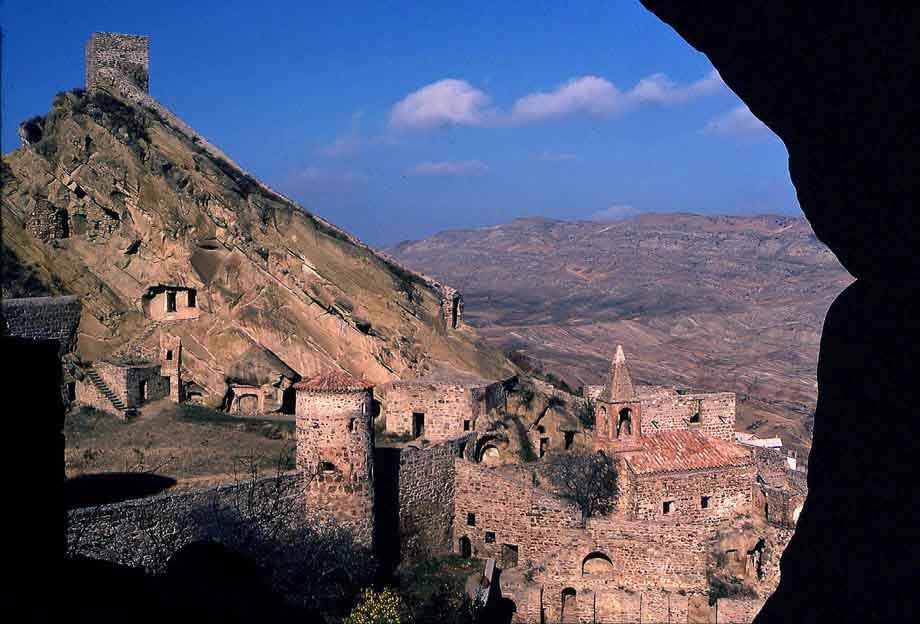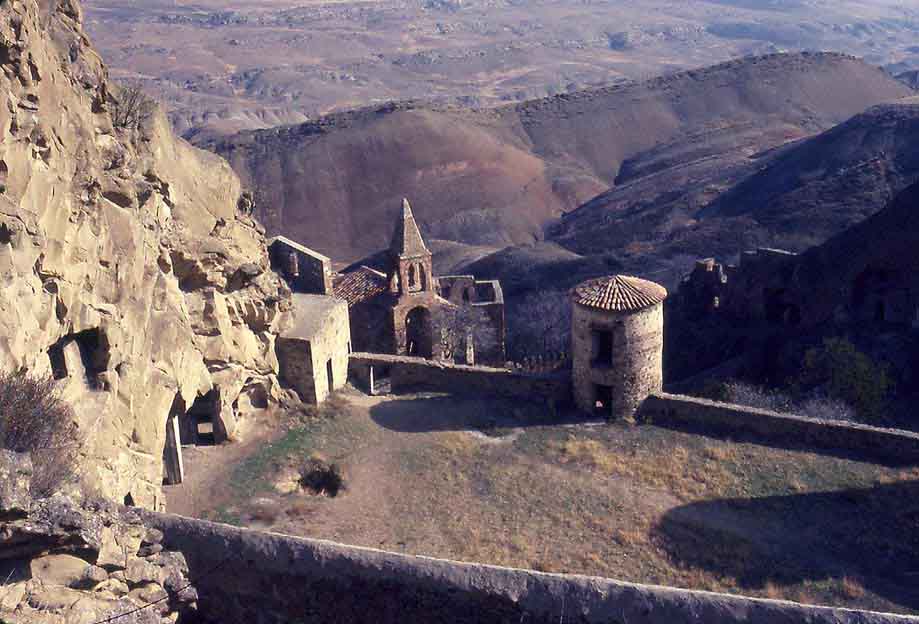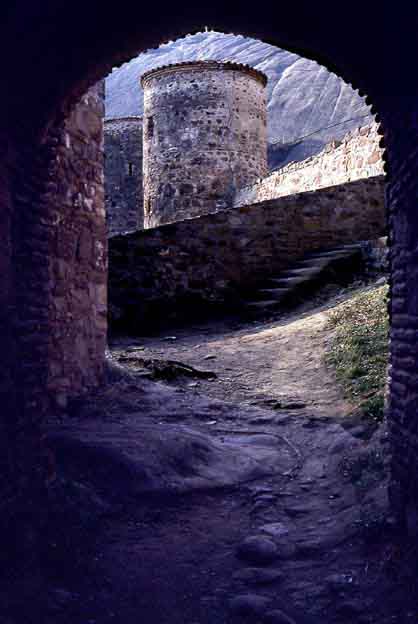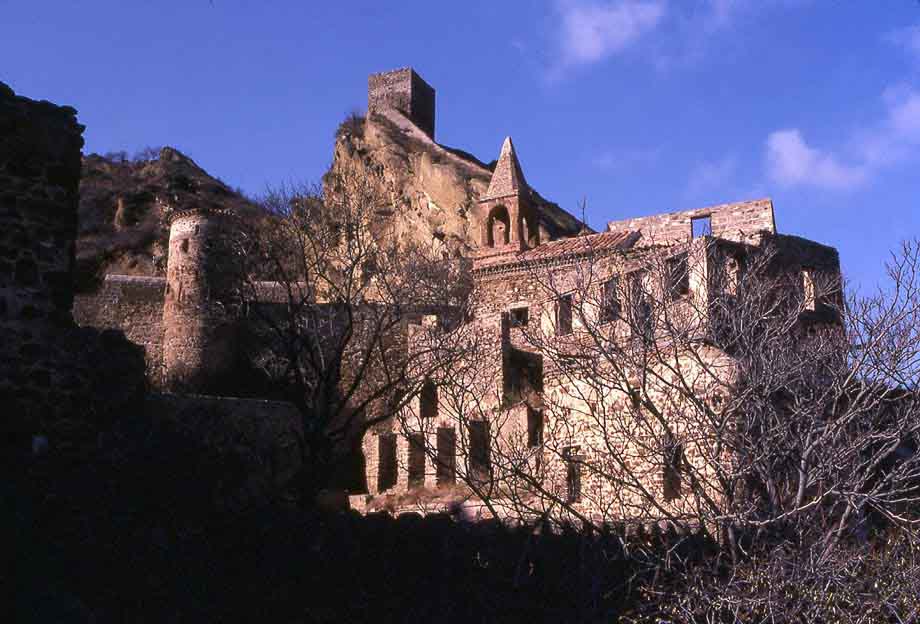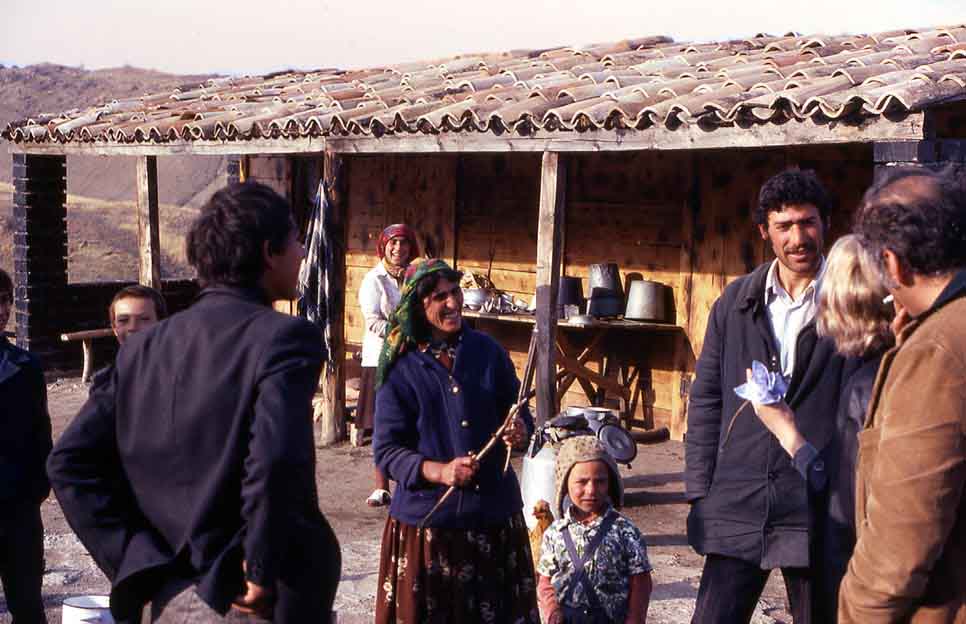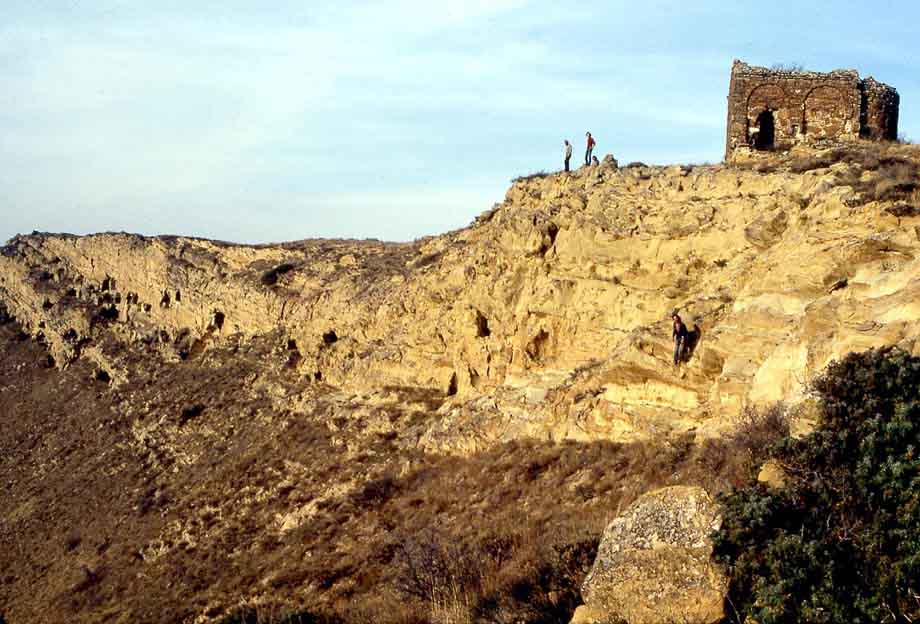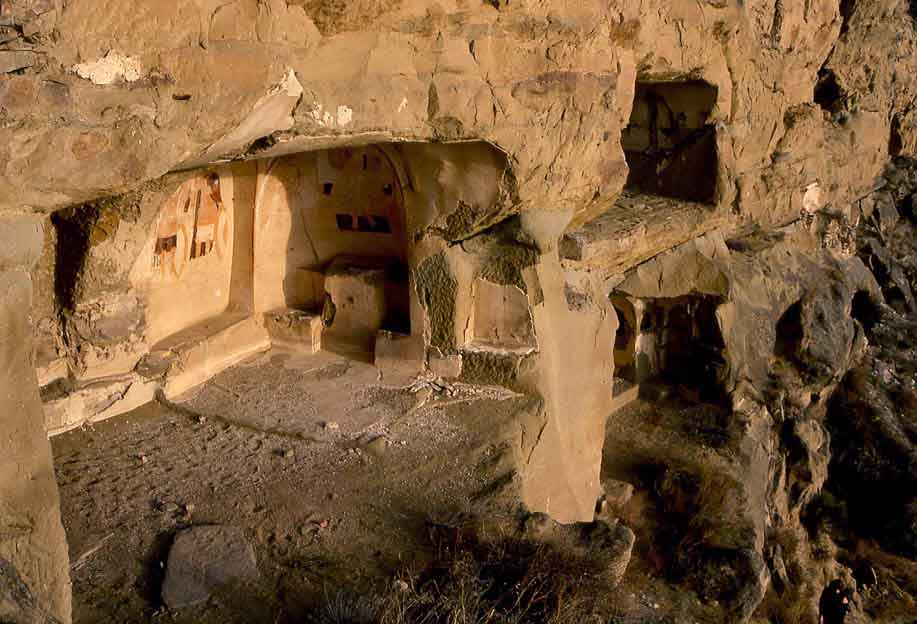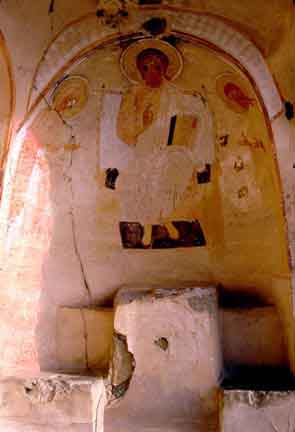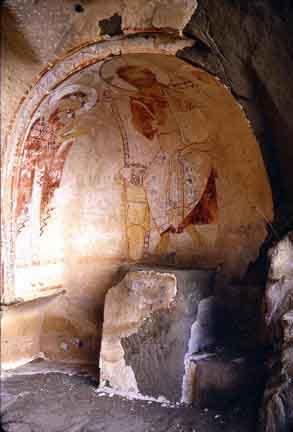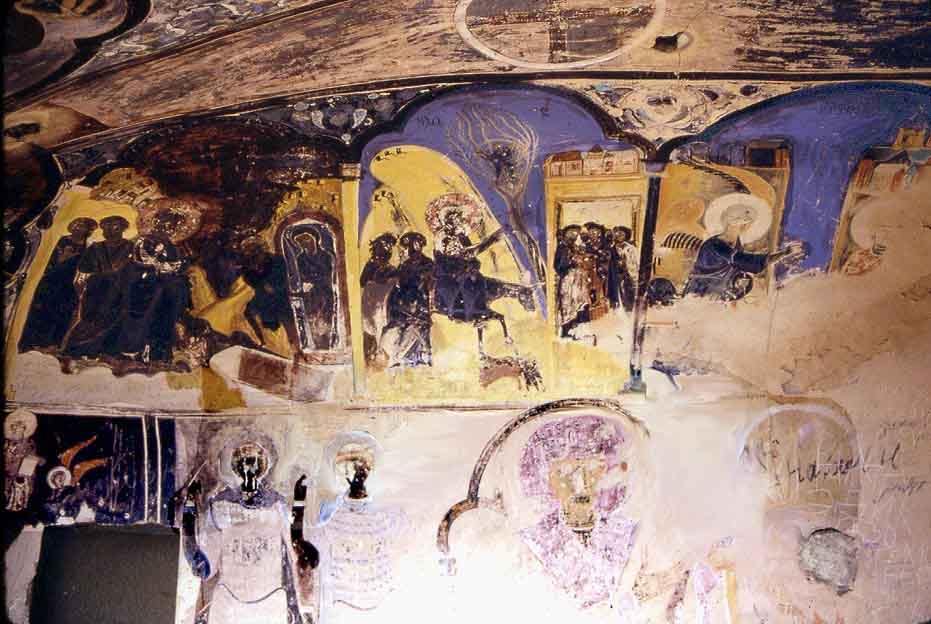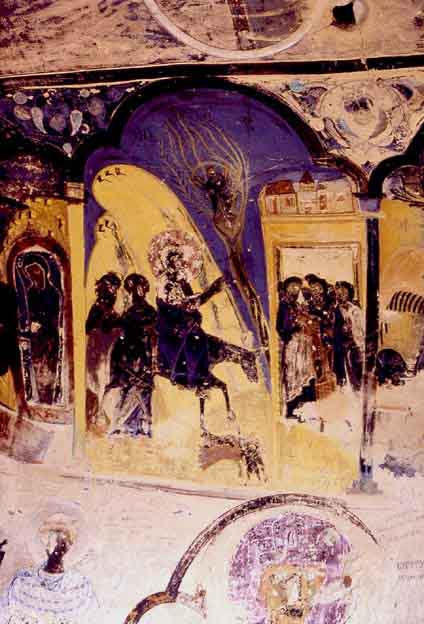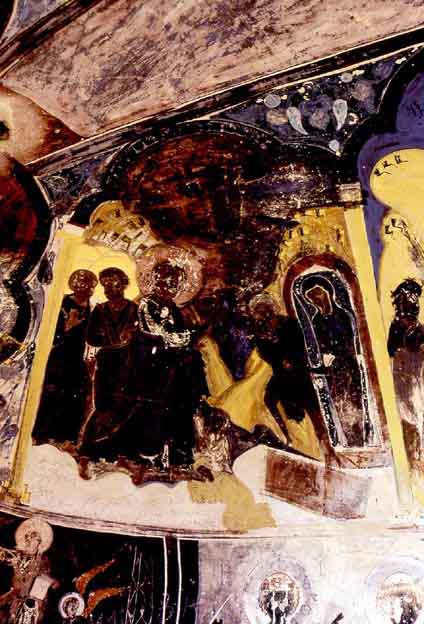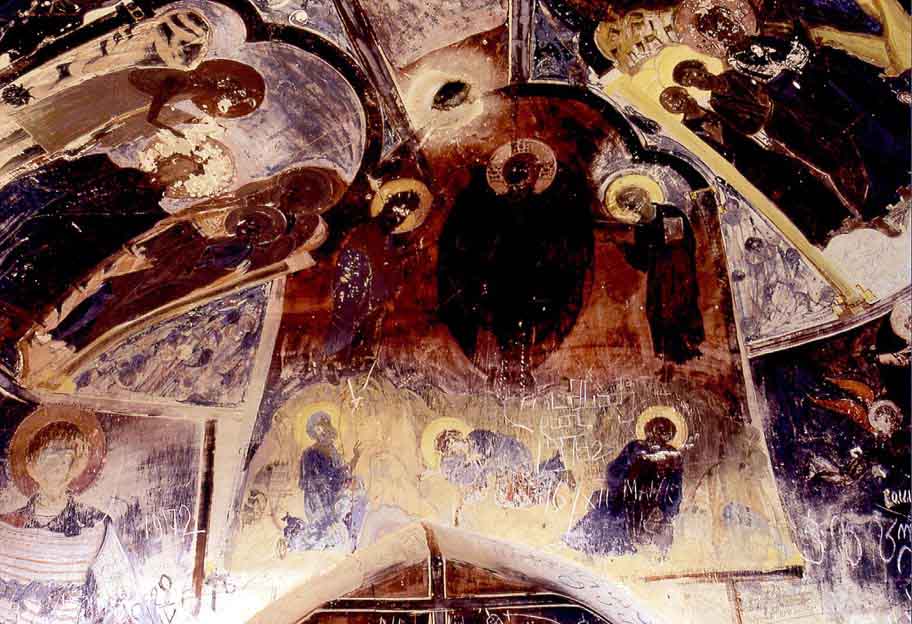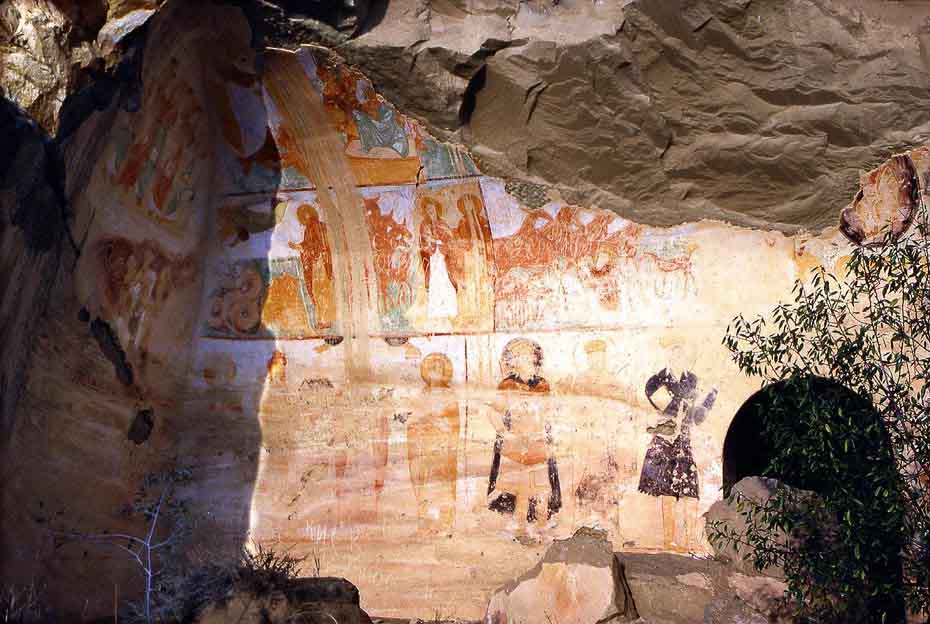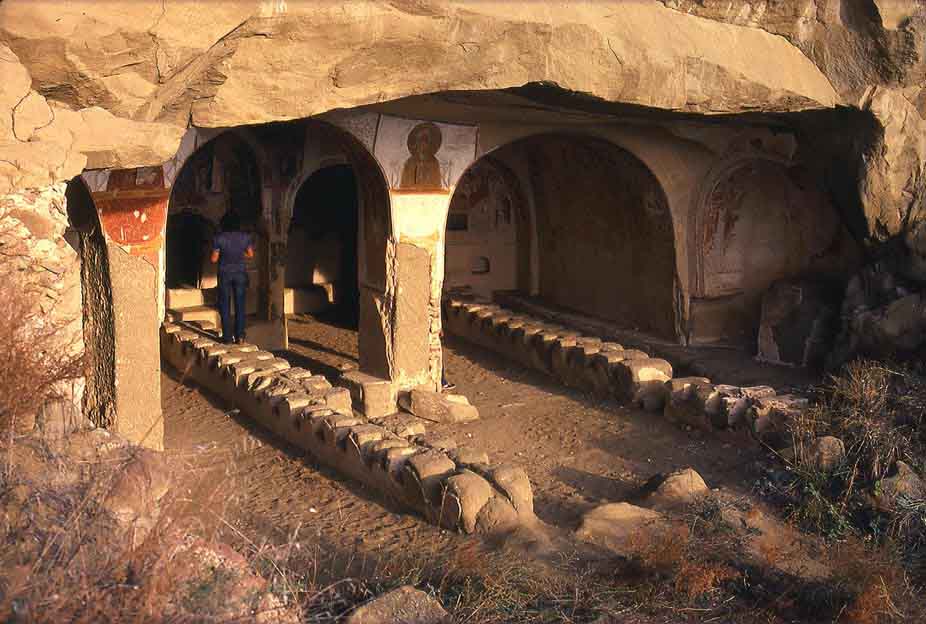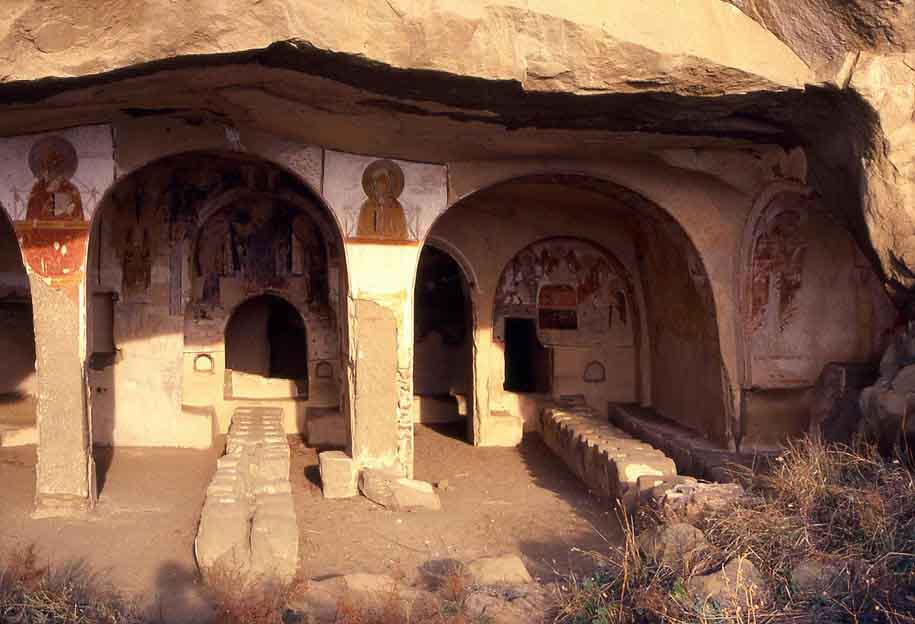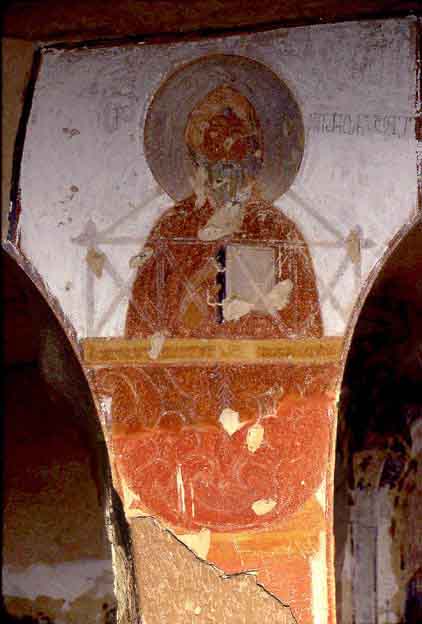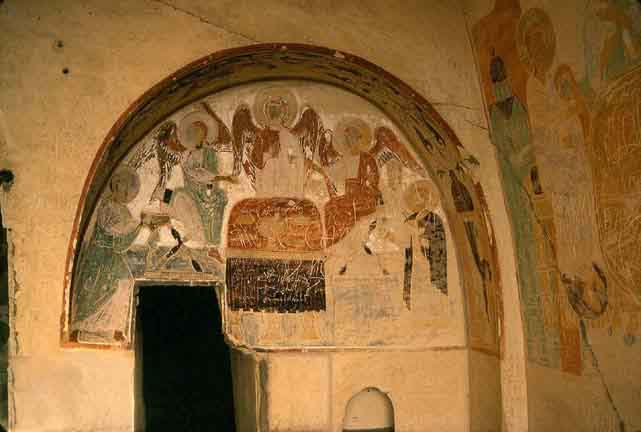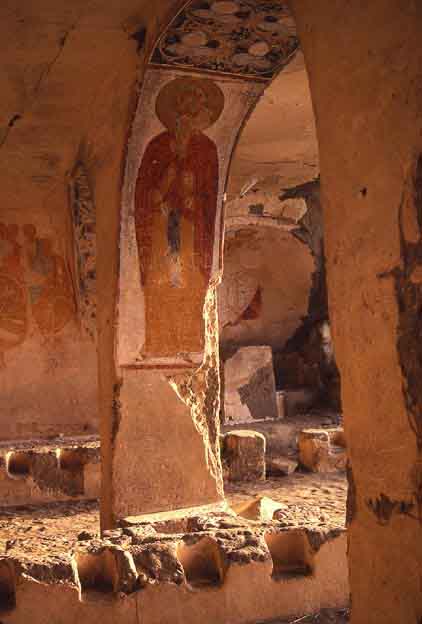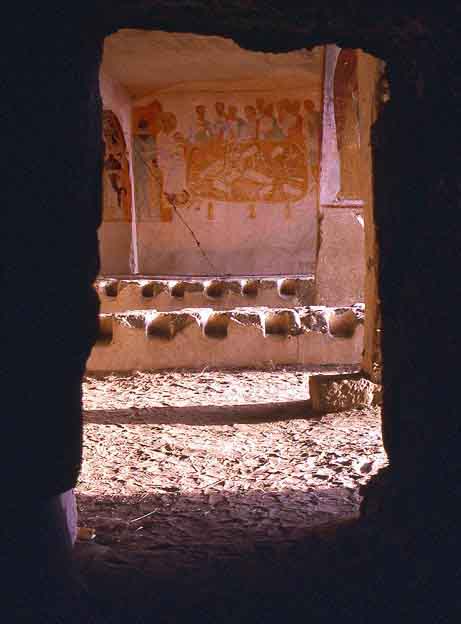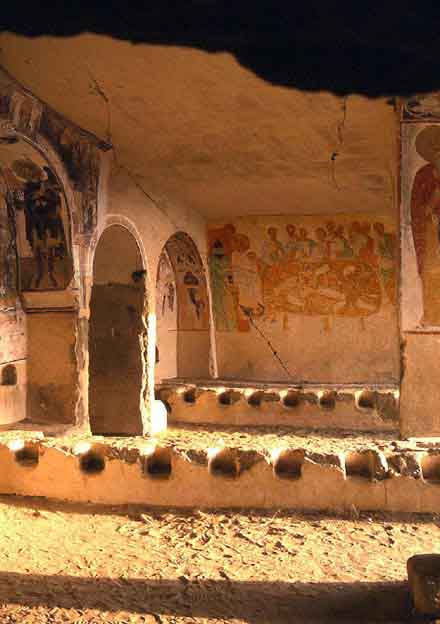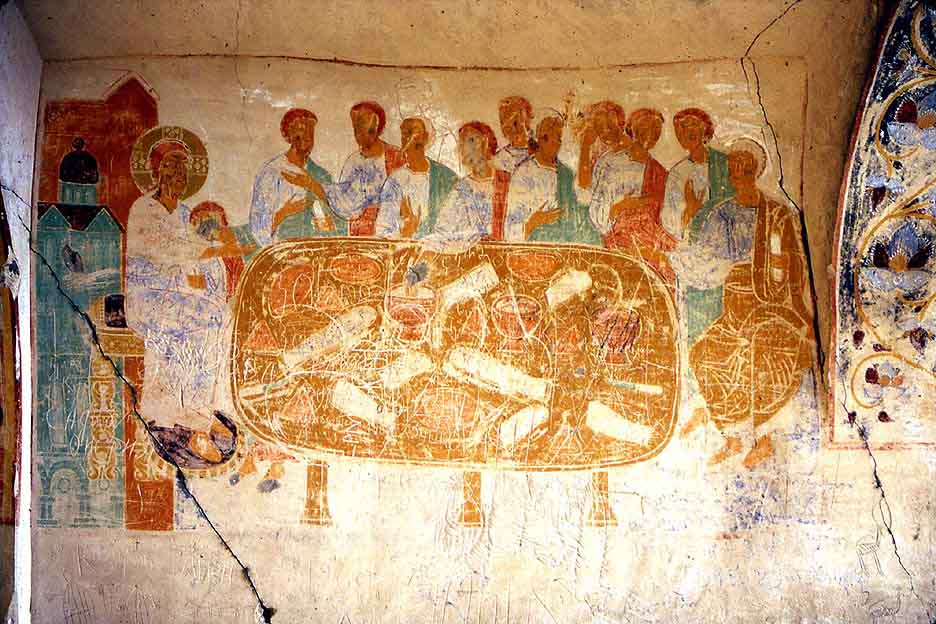Click on the pictures, some can be enlarged!
The song, "Rustavi" is a famous Gerorgian dirge on the death of s shepherd.
|
The Desert - David Garedji - Udabno October 14, 1980 With Barbara, Sophiko, Cornelius and Merab |
The southwestern corner of Georgia is "desert," a place for hermits (erimos means desert in Greek), who came there very early from Syria, Cappadocia, and Georgia to live in innumerable caves. The most famous and accessible cave complex is near the Lavra of David Garedji in Udabno very close to the border with Azerbaidjan. In Soviet times the area was a training ground where the Red Army practiced the invasion of Afghanistan, it was therefore closed to foreigners. Merab never explained through what connections he got the permits to take us there. That day became one of the highs of our two months in Tbilisi. I had seen the pictures Rolf Schrade had taken of the frescoes in the caves, and I had begged Merab for years to take me to Udabno. This surprising request from a German-American physicist was one of the reasons why he had invited us in 1980: He was going to show us Georgia - and Sophiko was to spend hours in her mother's library reading up on Georgian art-history. - The desert and the frescoes in its caves have remained one of my dreams: not only are there many more, but now that the Soviet Army has decamped to Chechnya, a number of new ones have been discovered in the wastelands east of David Garedja. Photographs of these frescoes are rare, usually black-and-white, and of poor quality and definition. This collection is unique and some of my most precious images.
|
Merab did not know where the caves were, and we spent most of the day searching for them. |
|
Cornelius and Sophiko searching in the rocks |
|
Sophiko was scared of heights and snakes, deadly Asian vipers of which Cornelius found dozens of skins, but at this time of the year they were hibernating, we never saw one. |
|
Finally Merab, who prefered to ride his car to hiking, took Sophiko by the arm - but the caves remained elusive. |
|
It was decided that we have lunch, to which Sophiko had brought a Tbilisi Torte in the white box. Merab drove us to a suitable place and Cornelius complained all the way that the high grass was tickling the soles of his feet. Here Corneliusi Biji holds up his Swiss Army Knife. |
|
The Udabno Lavra was easy to find, a church, several dilapidated buildings, and |
|
....a few empty cave holes in the mountains. |
|
Then Cornelius discovered a cistern full of frogs and a complicated system of runnels to supply it with rain water. |
|
The 17th -century main building of the Lavra |
|
Merab approached a group of Azeri cow-herds asking for directions - alas they did not speak Georgian or Russian and were more fascinated by Sophiko's bleached-blond hair.... |
|
Finally, it had become late afternoon, a Georgian woman living at the Lavra showed us the way - a strenuous hike up a long mountain slope - and on its western side there they were , man-made holes in the rock face. |
|
The cells of the upper tier - Barbara is seen climbing up in the lower corner of the picture - were painted with saints and "deeses" glowing in the low sun light. |
|
A "deesis" is a painting of Christ flanked by the Mother-of-God and St. John the Baptist, a standard sacred image in Orthodoxy |
|
|
I am not sure but believe this large chamber on the upper levels to have been used as a chapel or church. It is painted with lively scenes from the New Testament - in which the lead-white has oxidized to black. - The purple color is a special to the frescoes of Garedja. |
|
Christ's entry into Jerusalem |
|
The revival of Lazarus. |
|
Christ's Transfiguration on Mt. Tabor in the ceiling conch. |
|
On the other end of the complex are a collapsed church - seen here - and the refectory of the monks. The prominent scene with the horses in the center of the second tier must be Georgian - I don't know a story this fresco refers to. |
|
The Refectory |
|
The frescoes of the refectory are among the most beautiful and best known in Garedja. The tops of the two columns are appropriately occupied by images of Syrian Stylites - the left one is probably Simon Stylitis - saints who spent their lives on high columns exhorting the people for their sins. |
|
Simon Stylitis |
|
An Old Testament Trinity, A favorite subject of the Eastern Church: Sarah and Abraham served lamb cooked in milk(!) to three strangers, who Abraham recognized as messengers of God. The greens are typical of frescoes (12-13th century) in the desert caves. |
.
|
An image of the Syrian founder David Garedji |
.
.
|
The Last Supper on the rear wall of the refectory. |
.
.
|
Last Supper. This photograph contains a surprise not previously noticed. There are, as in other representations of the Last Supper, eleven disciples. Usually, e.g., in Khintsvisi, Ubisi, Kariye Ekklesia in Istanbul, Aghia Sophia in Trabzon, as well as in the West, Judas, deprived of his halo, is placed on a low stool to the left in front of the table. Here he appears in the center of the others (fourth from left) dunking true to the gospel (Marc 12,20, Matth 26,23) a piece of bread into a bowl. - I owe this insight to Wachtang Djobadze, who sent me back to the Scriptures. - So, one disciple is missing. I found him standing and barely visible, as an outline-ghost on the wall behind the third person where no one seems to have seen him before. Before Wachtang's note I thought this was Judas. - Who is he, outcast by the Syrian(?) painter? |
Return to Travels in Georgia


